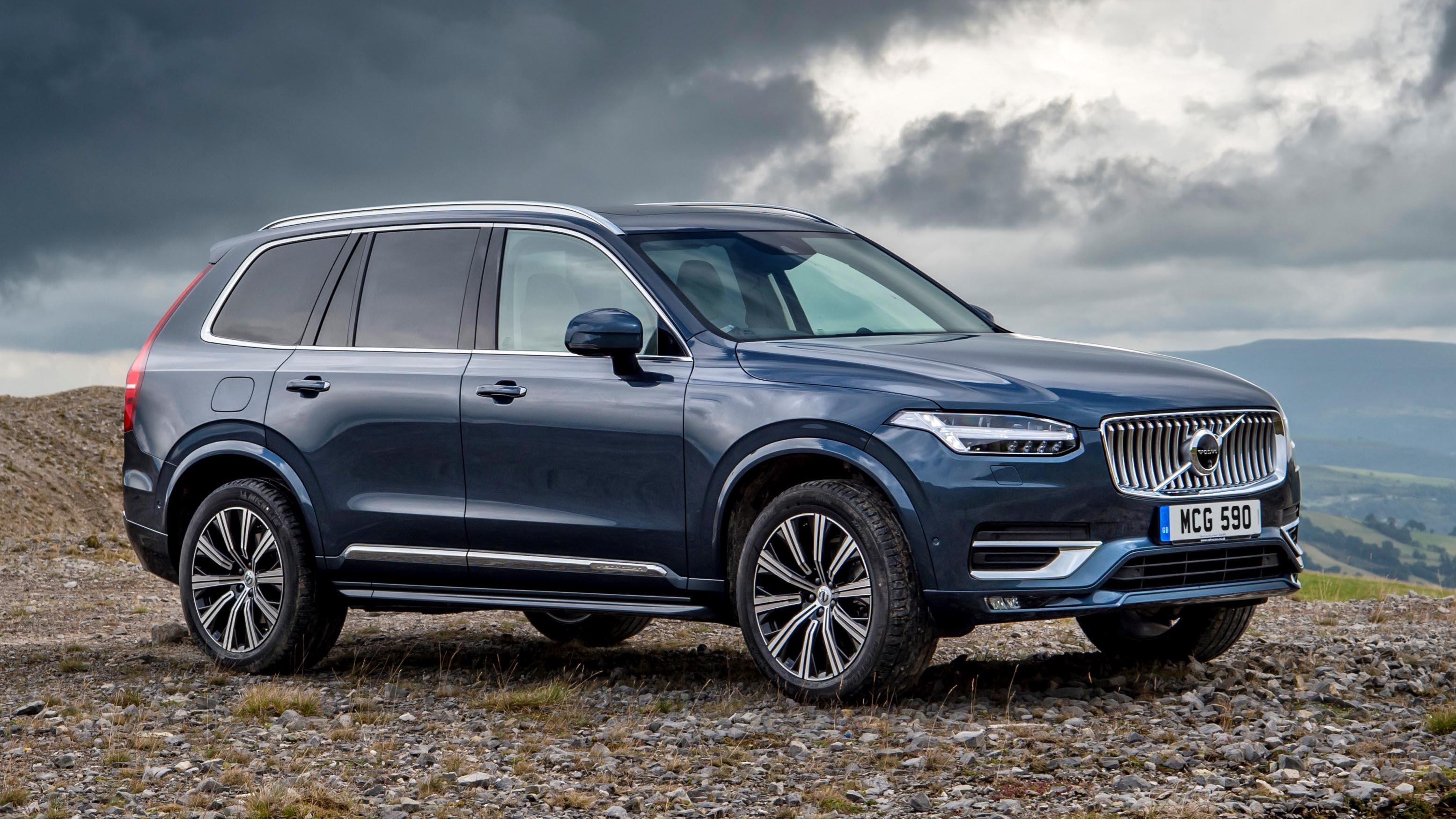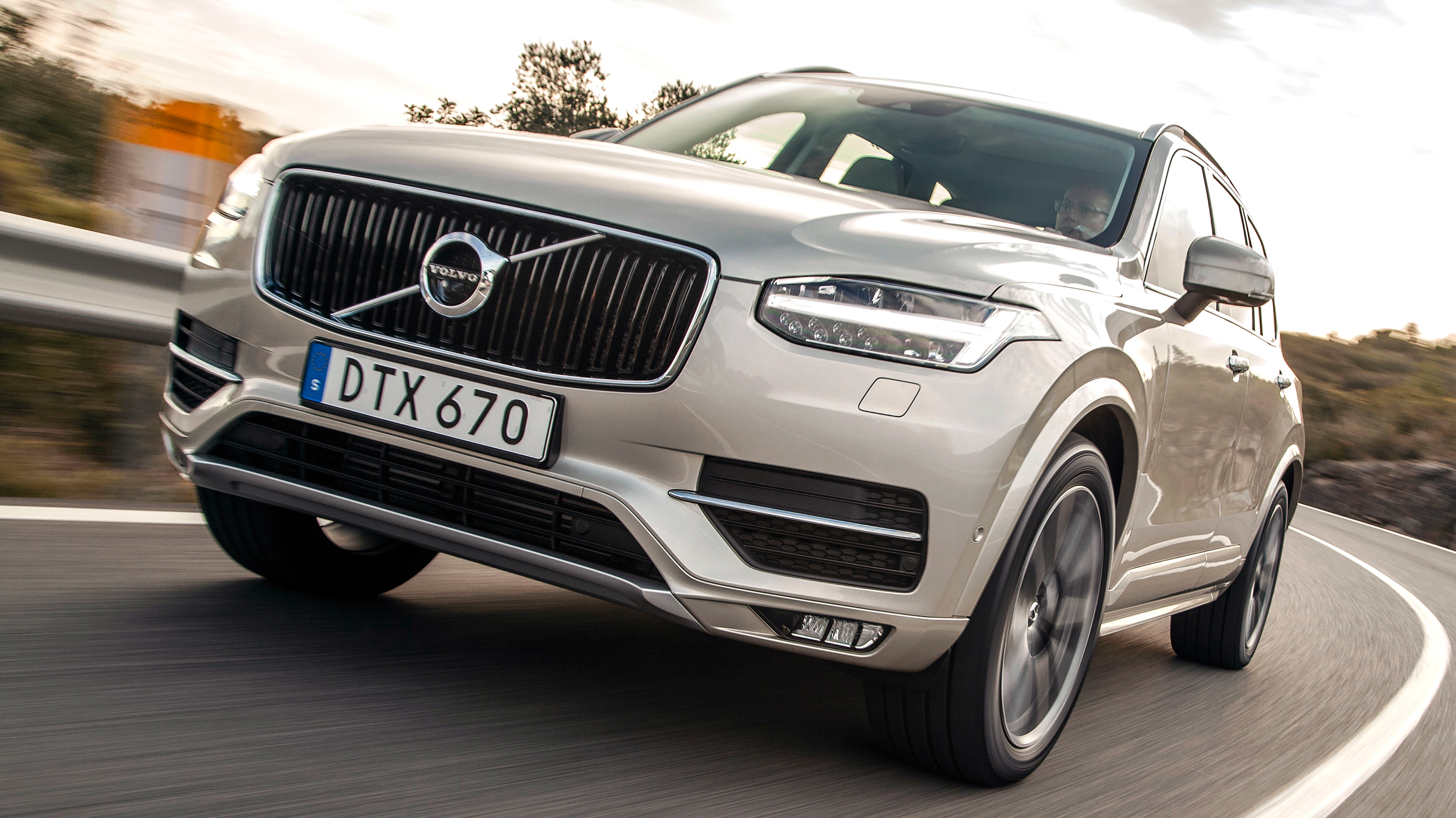топ гир volvo xc90
Volvo XC90
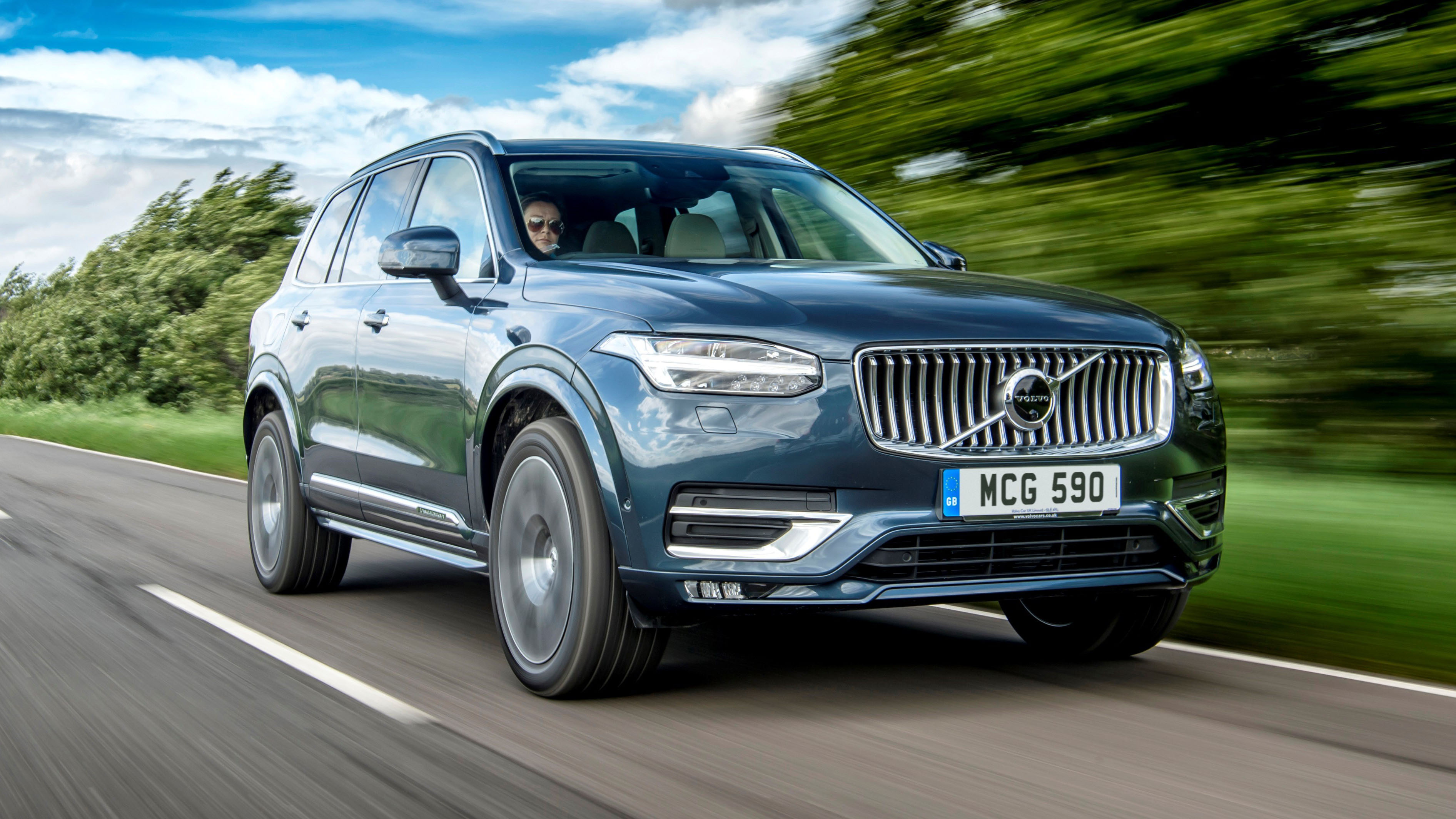

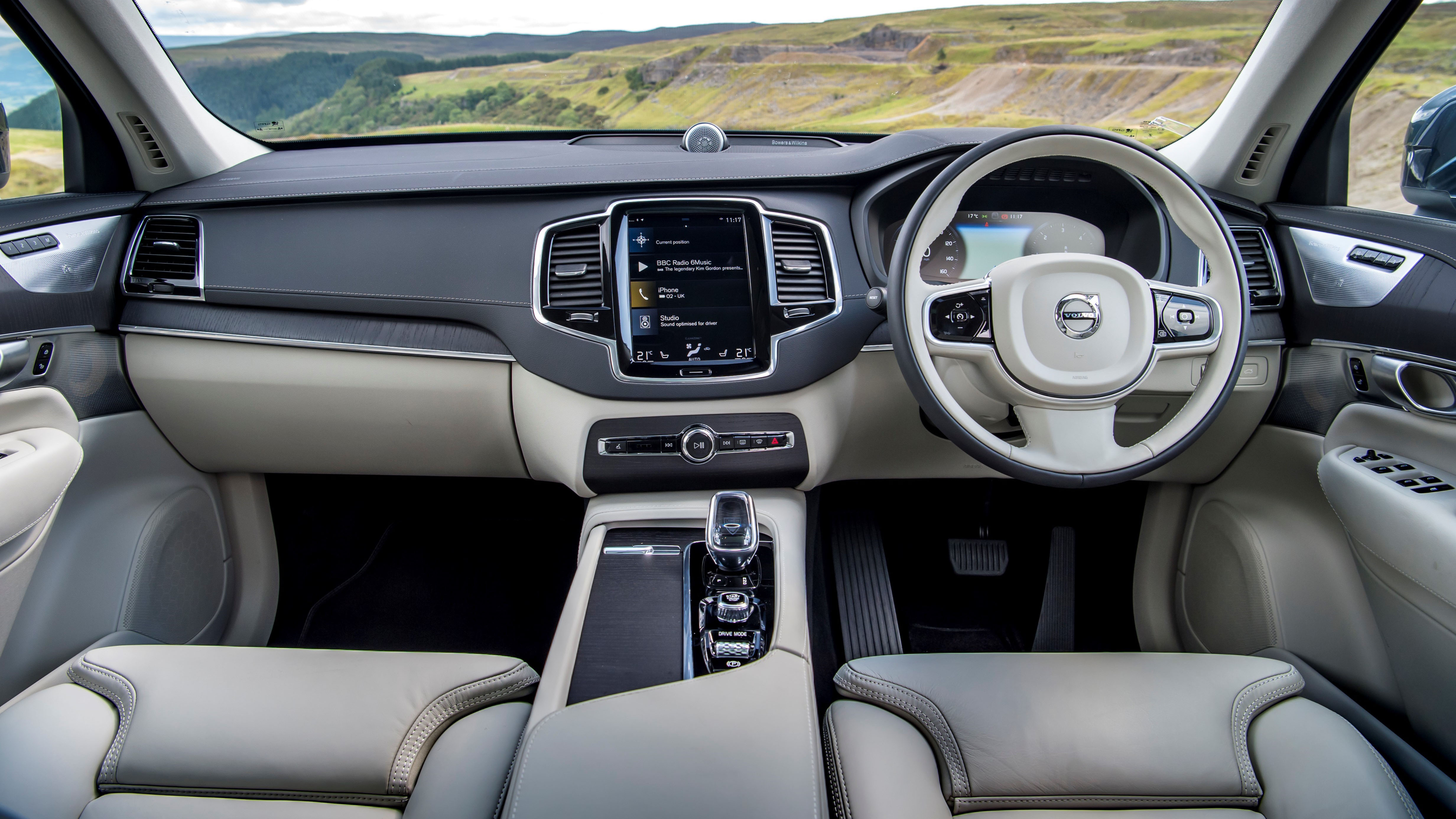

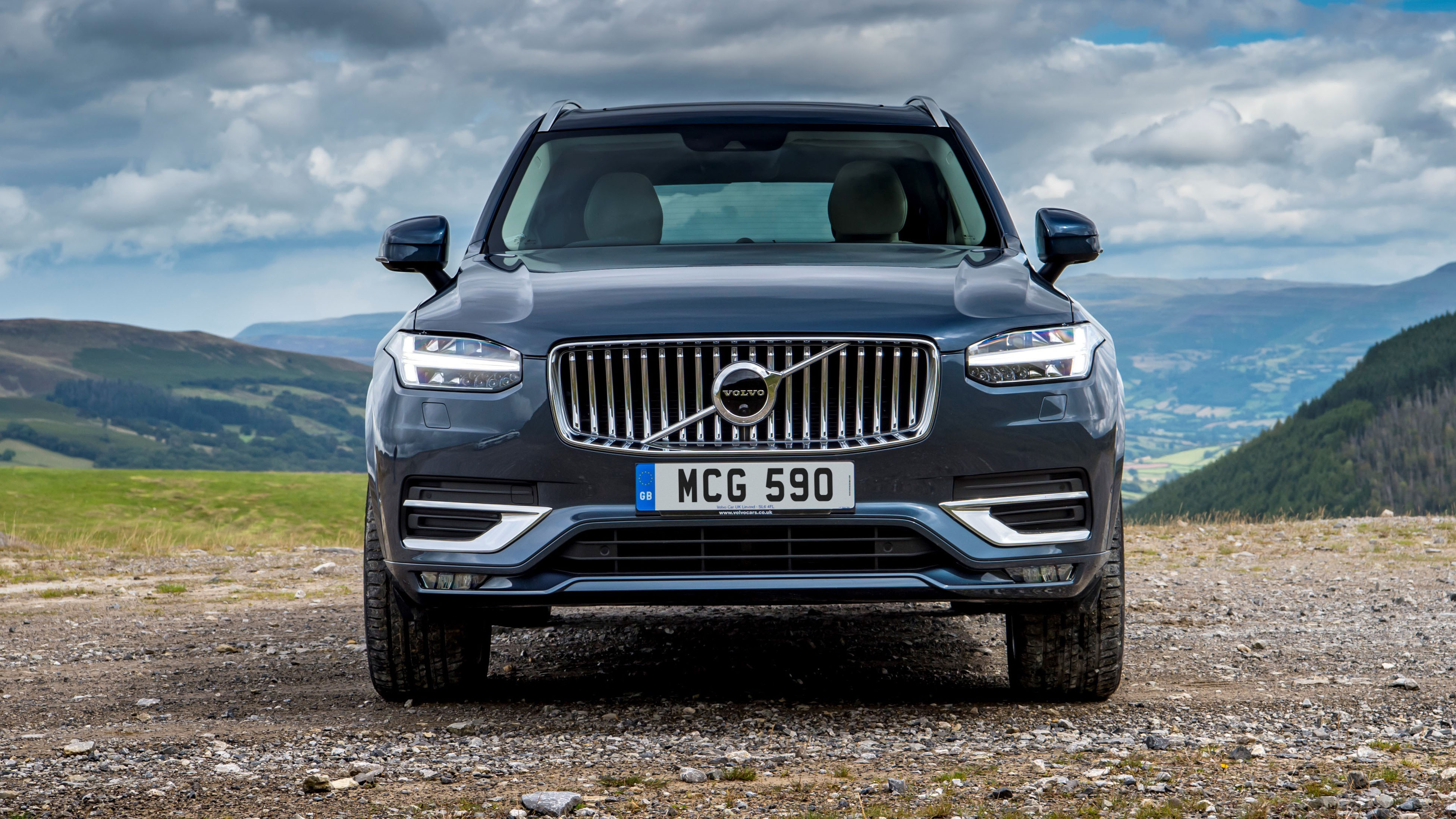
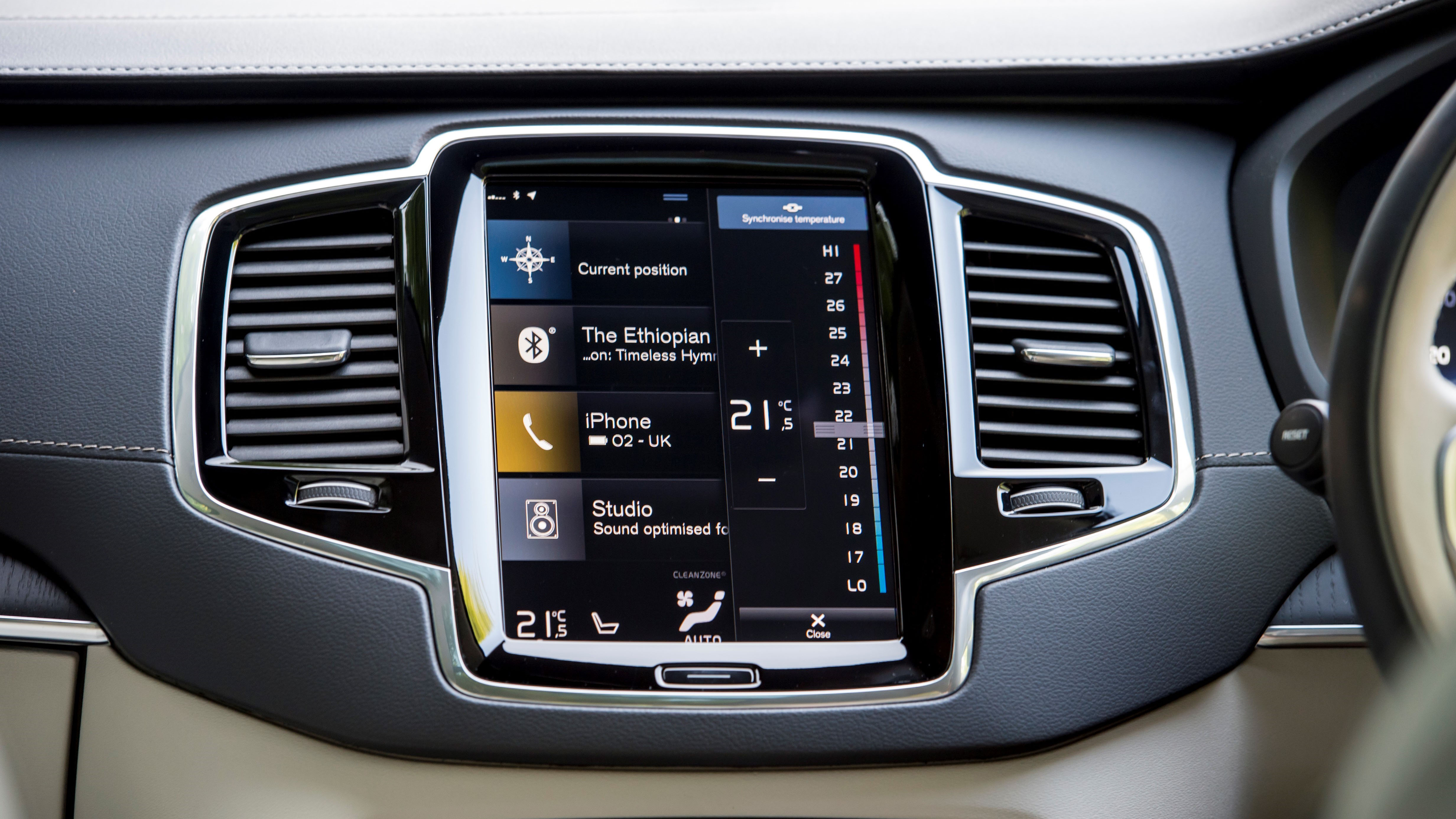
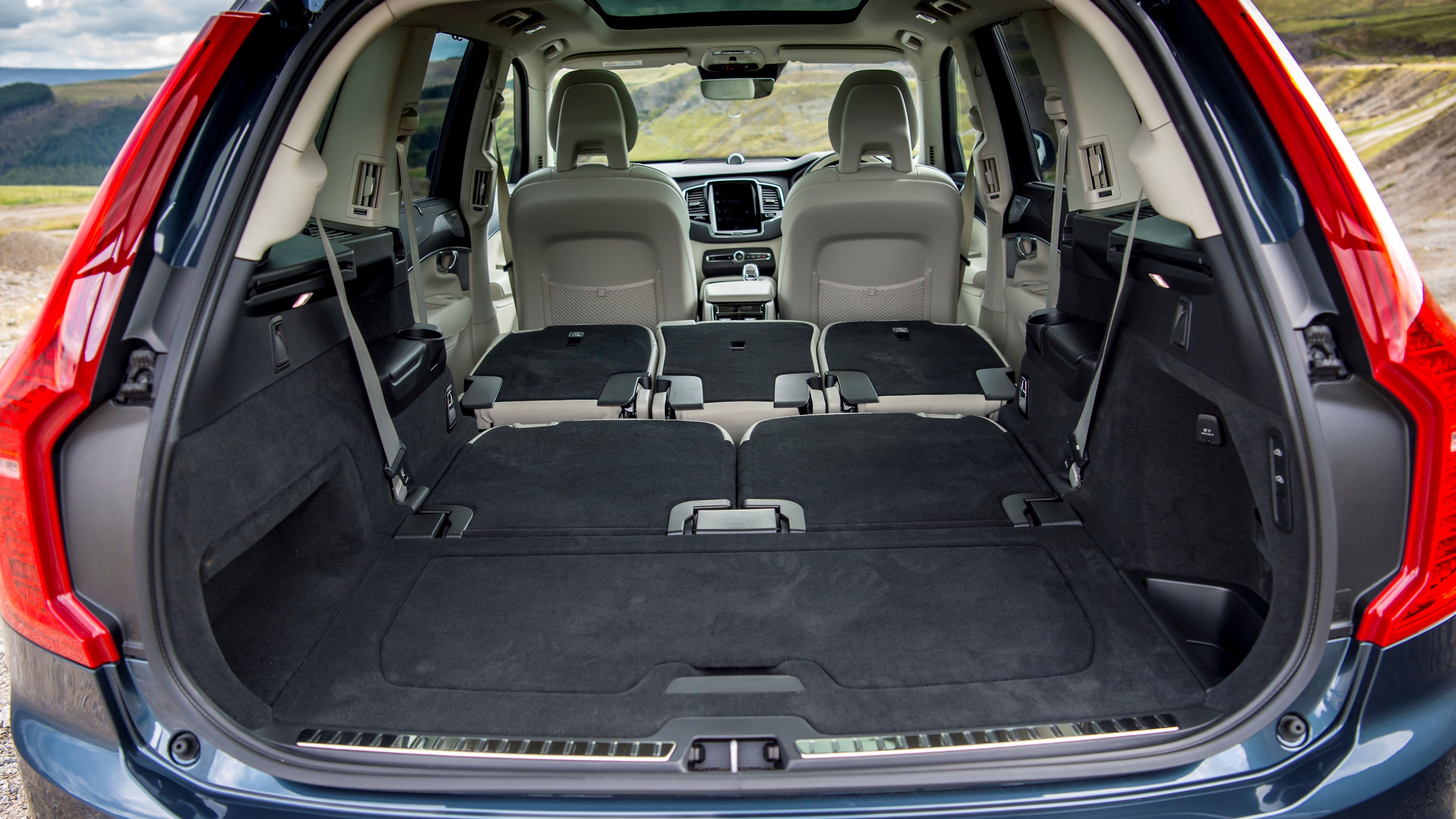
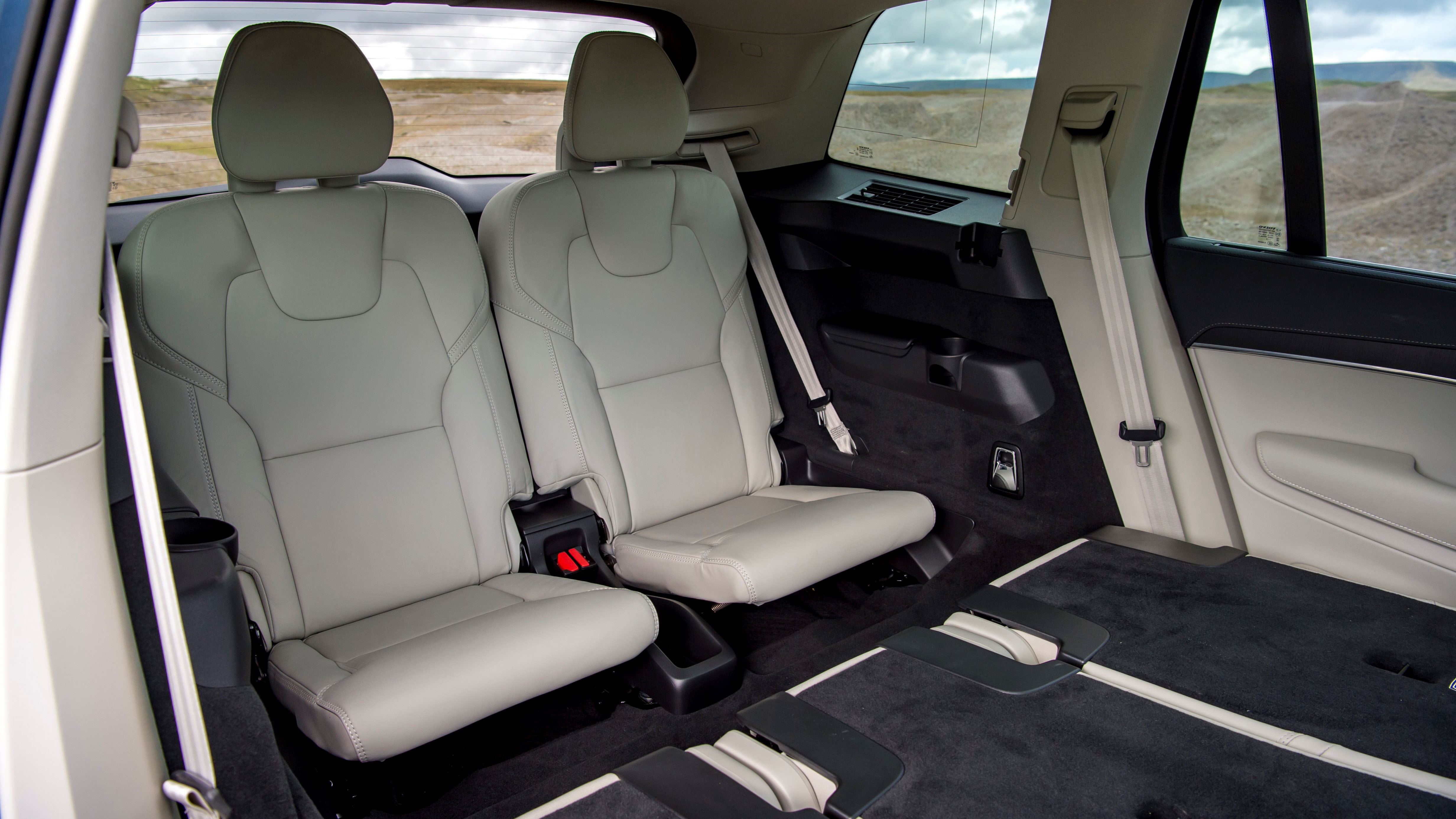
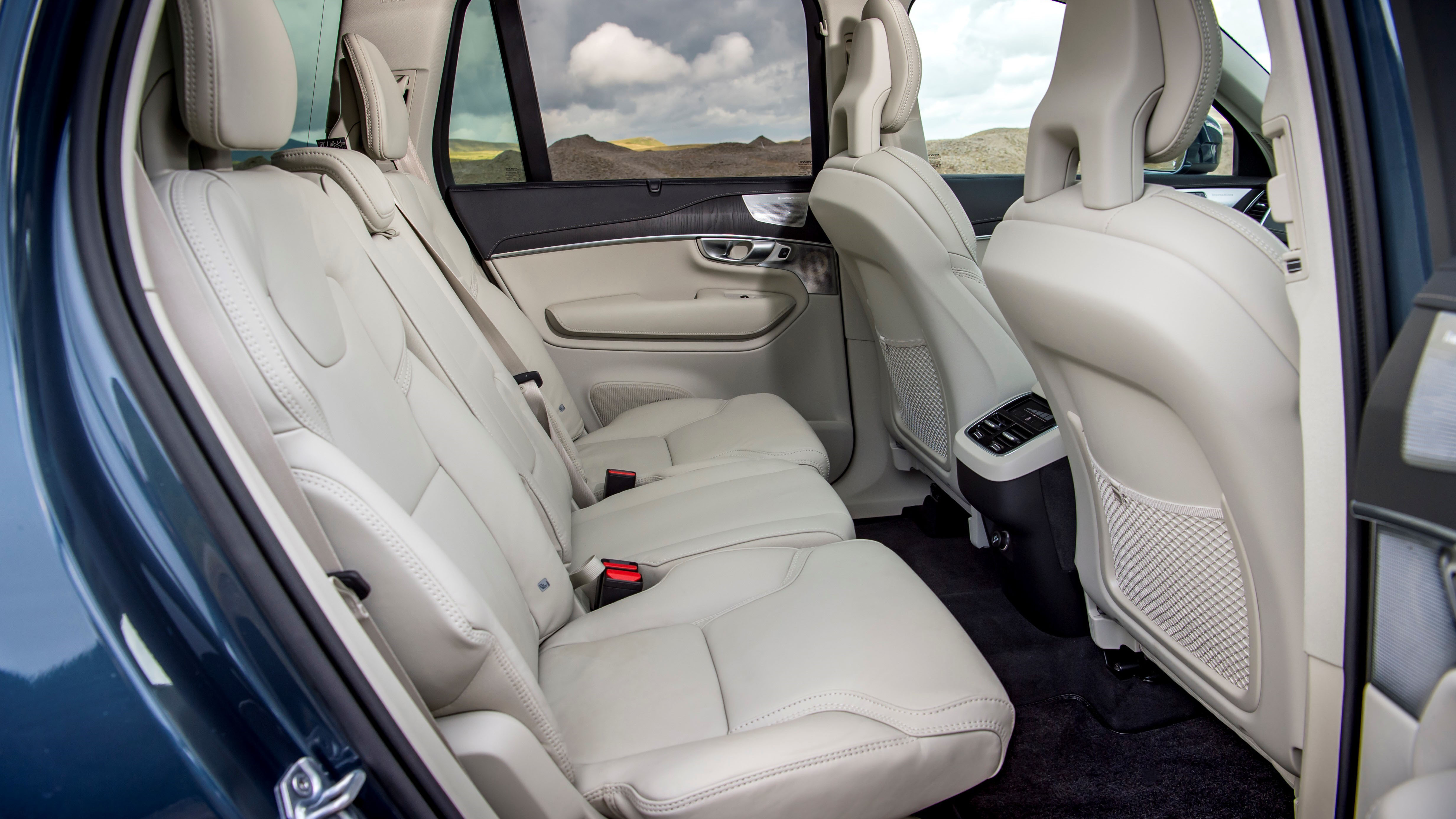

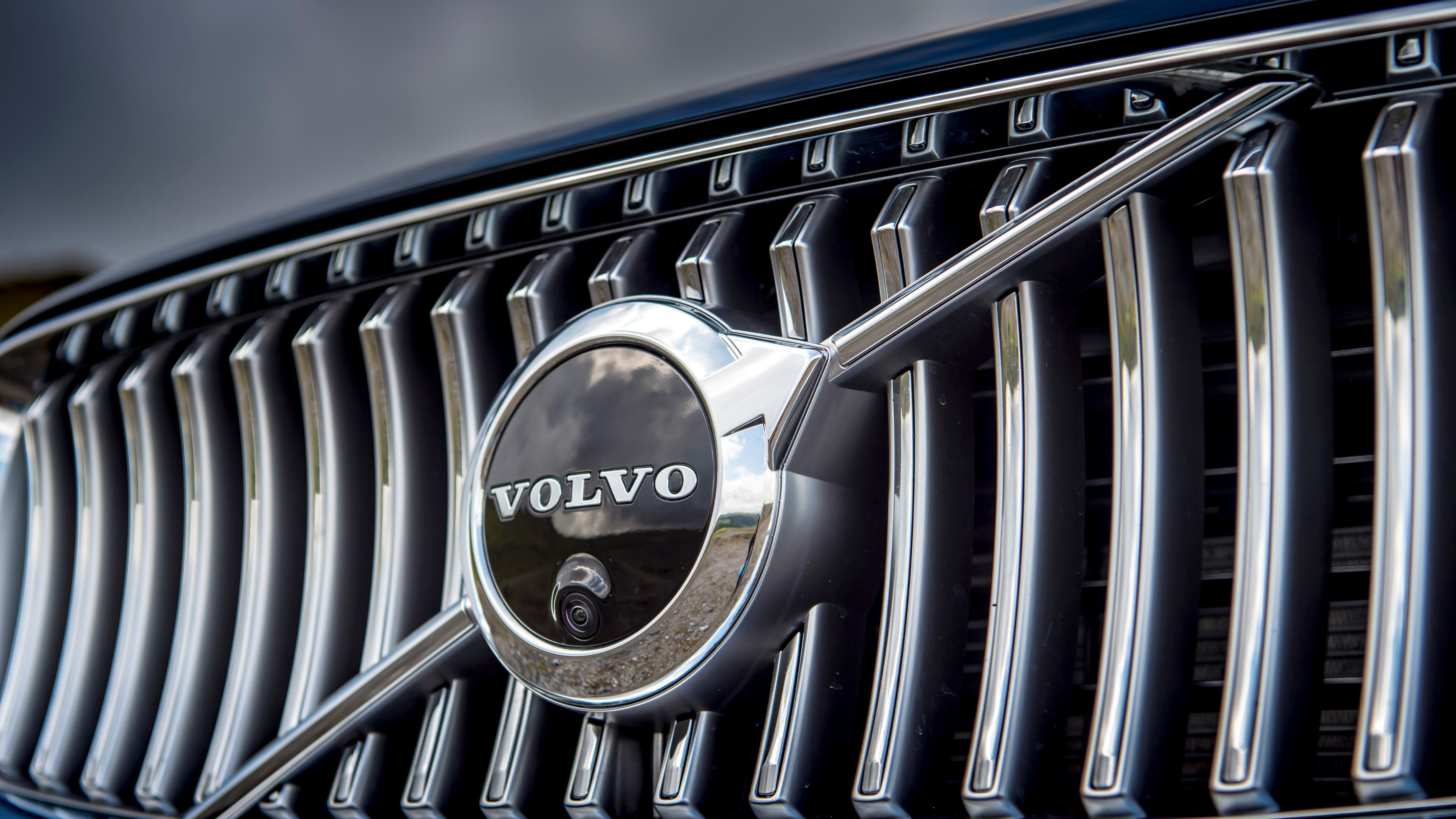
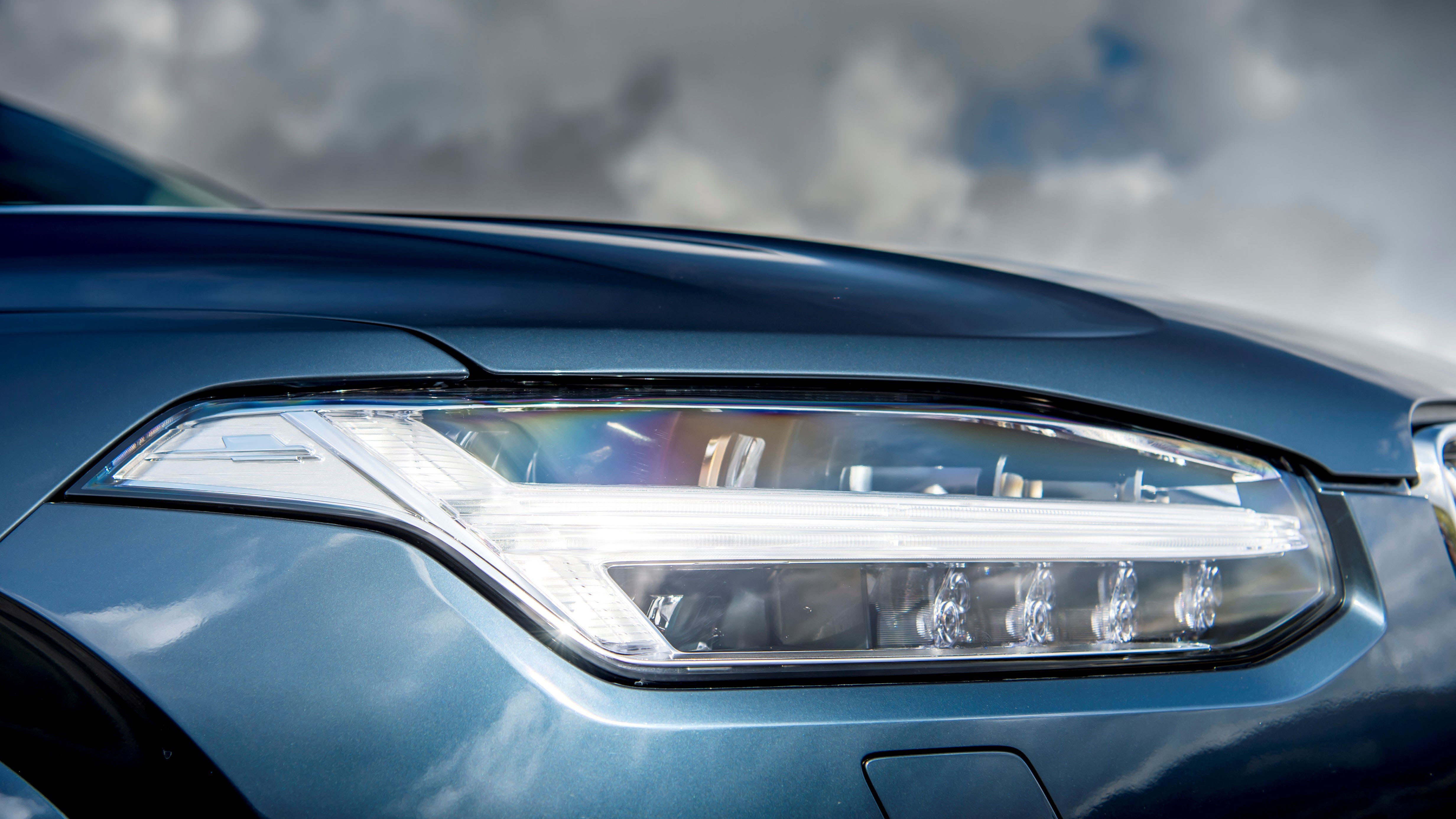
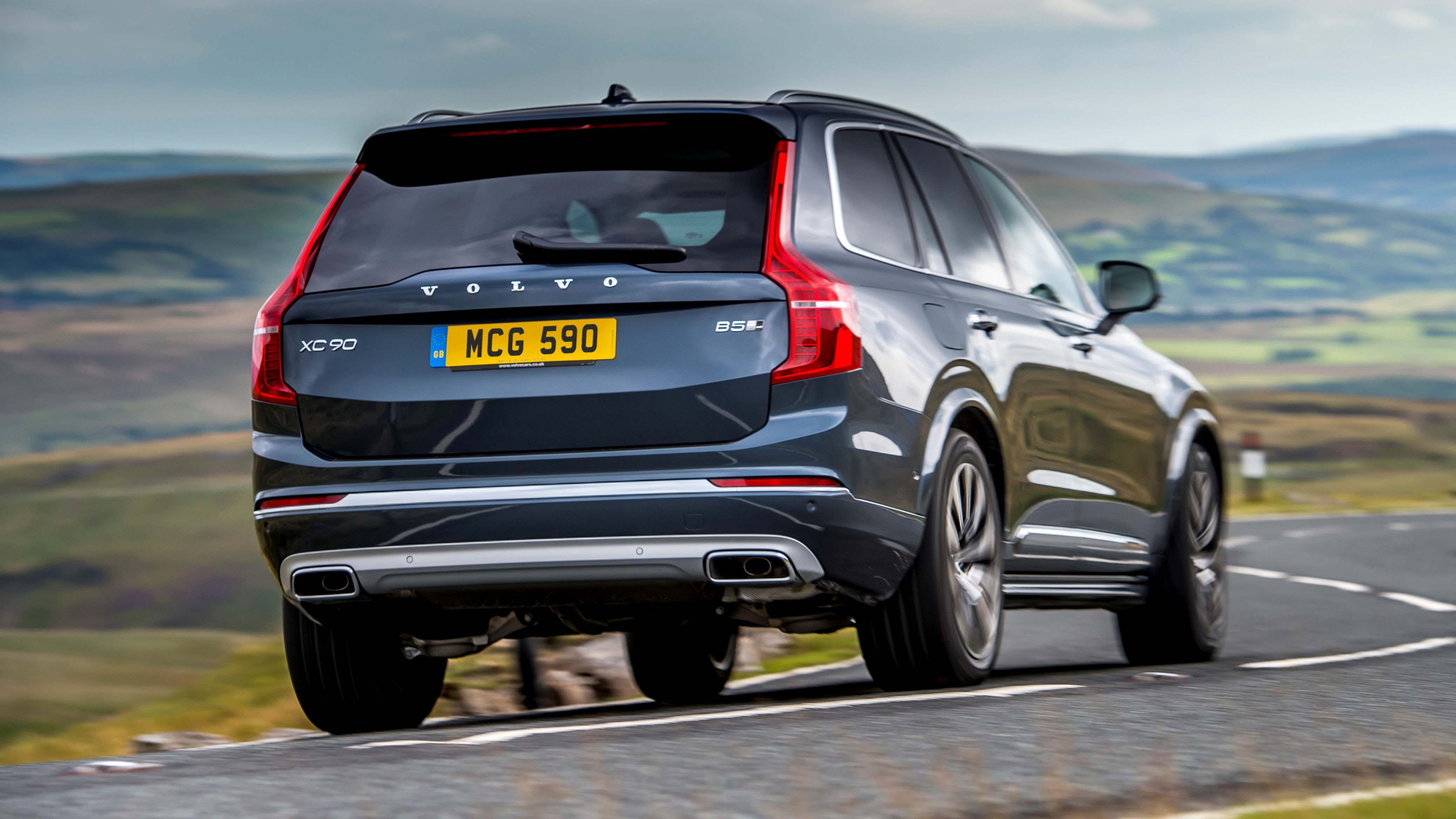
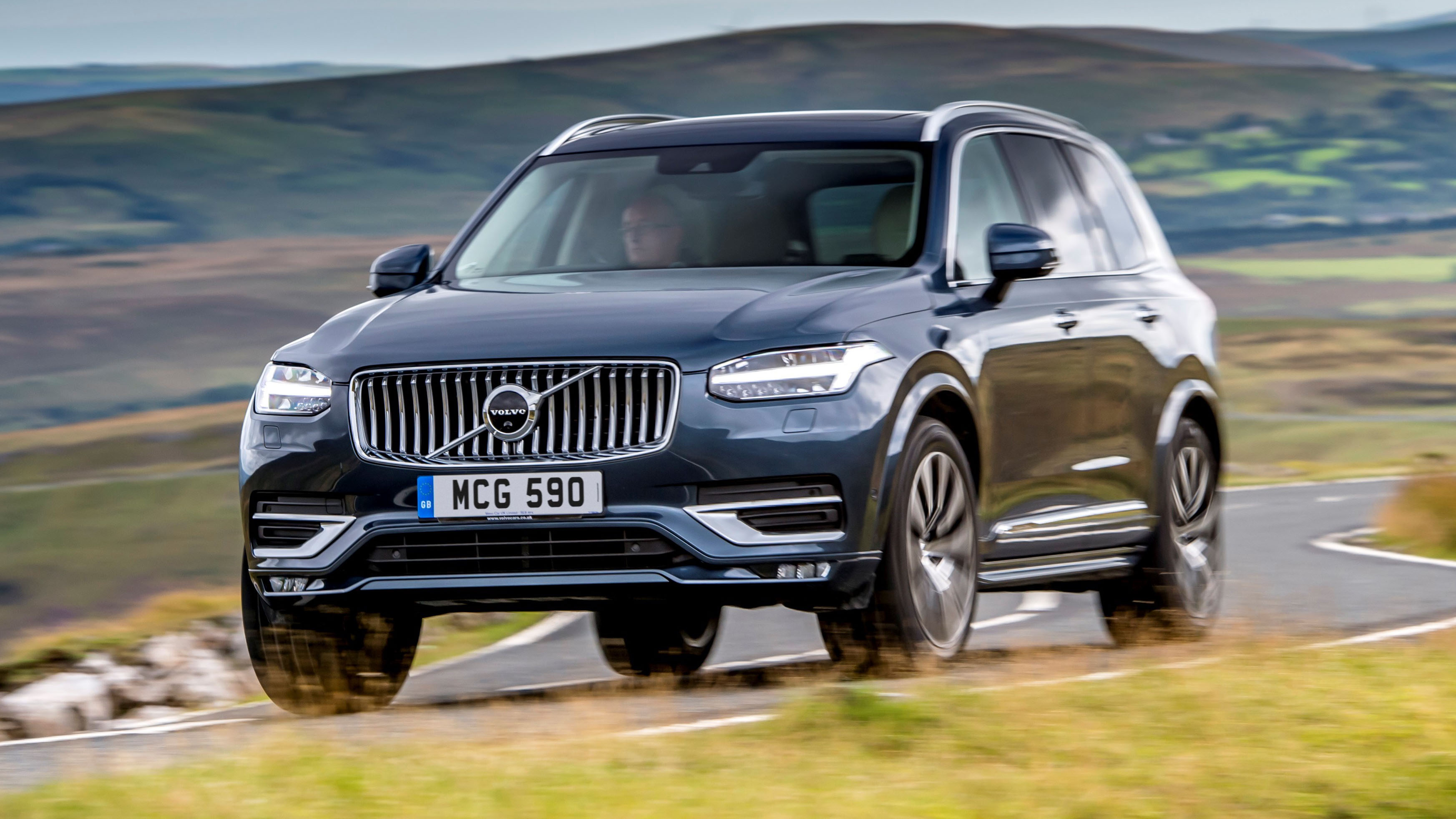
Driving
What is it like to drive?
All you care about is how quiet and smooth it is right? If not, you’re in the market for the wrong car. Concerned about performance and handling? Off you go to see Porsche about a Cayenne, what Volvo offers is calming, sensible progress, a relaxed ambience that… well, probably won’t last long if you’ve got five kids shovelled into the back seats.
The XC90 will do its level best to make things alright. In fact we can’t think of an SUV that’ll do more to help diffuse the situation. Cabin ambience is directly linked to the driving experience here. Unlike most German rivals, the dash layout is relatively uncluttered, which helps peace-of-mind when driving. The seats are downright superb, the driving position similarly fault-free. It relaxes you from the word go.
Now, what’s important with the XC90 is to avoid the most popular trim level. 25 per cent of buyers opt for the R-Design trim. Wrong. It brings big wheels which means a firmer ride and more road noise, despoiling your inner calm.
If you can bear it, a standard Momentum on 19s is the optimum XC90 experience. The ride is cushioned and plush, noise kept to a minimum. Honestly, it’ll help lull the kids to sleep on long journeys. Don’t despair too much if your inner-aesthete insists on 20s, but do resist the temptation of the 22s. Volvo has always had a tricky relationship with ride comfort, and hasn’t yet conquered the big wheel/soft ride trick. But then no-one else this side of Bentley or Rolls-Royce has either.
Let’s not talk about handling, as that’s unbecoming of a Volvo. What you do need to know is that the XC90 is crisper to respond to its controls than say a Discovery or VW Touareg. They are more workhorse-like – you’re aware you’re asking a lot of weight to move. The XC90 is more biddable and responsive. The steering is lighter, it needs less effort to turn. Roll is well controlled through corners, with no old-school heave and pitch to worry about.
The updated 2.0-litre four cylinder B5 diesel engine is much improved. Still not the smoothest out there, but the addition of a 48 volt system with a small electric motor to spin up the turbo has not only improved throttle response, but ensured torque drop-off during gear changes is all but non-existent. It’s a good engine, and with 354lb ft of torque, it has all the grunt you need no matter how many seats are occupied.
For us it’s a better all-round solution than the T8 hybrid. Yes, the T8 is faster (just 5.5secs to 62mph, where the diesel achieves 7.1secs), disguises its weight surprisingly well and can be driven on electric alone. If you live and do most of your driving in town and have off-street parking and a home-charger, it makes sense. Run engine-off most of the time and you might be able to get over 100mpg. But the reality is more likely to be an average around the 35-40mpg mark. Which is about what you’ll get from the diesel as well.
The long and short of it is that the XC90 drives biddably and ably. No nasty habits or unseemly behaviour. Ignore the various drive modes unless you want to lock the T8 into Pure (electric-only), and don’t panic if you can’t afford the air suspension upgrade. It’s only a further complication on a car that trades on its simplicity.
Volvo XC90














Good stuff
Interior design and packaging, B5 engine, road manners, family focus
Bad stuff
Hybrid still short of range, but not much else really
Overview
What is it?
The best family SUV out there. Which, given the usage of most modern SUVs, makes this the pick of the bunch. Volvo was arguably the first firm to realise, back in 2003, that what people wanted was the functionality of a people carrier, but the image of a 4×4. The first gen XC90 was a runaway success, staying on sale until the current version arrived in 2014.
If it ain’t broke, don’t fix it.
Actually this was a ground-up rethink, built around different engines and a new modular platform that also underpins many other Volvos. But you’re not interested in that. Because you’re already thinking this is a handsome, cool car for forward-thinking people. Like you. And a safe one too, given all versions feature Pilot Assist driver assistance as standard (providing radar cruise control and lane keep).
Presumably it’s been updated since then?
The XC90 was facelifted for 2019 with a bit of cosmetic work, but the engine line-up has evolved again since then. Three are available, the cheapest being the 247bhp, mild-hybrid B5 (you can have a petrol or a diesel) at a smidge over £56,000. Step up a trim level and you’ll unlock the option of the petrol-only B6, another mild hybrid that ups power to 296bhp and cuts the 0-62mph time from 7.3 to 6.4secs. These start from just over £64,000.
All versions are 4WD, have eight-speed automatic gearboxes and, of course, seven seats spread across three rows. Worried that an all-new one will be along shortly? Not Volvo’s style. The first gen XC90 stayed on sale for 12 years (about four years longer than the industry norm), and there’s no reason to suppose this one will be any different. Volvo’s stated aim of having 50 per cent of its model range fully electric by 2025 will likely have a bearing on the XC90 towards the end of its life, but for now (and likely until 2022 at the earliest) the T8 hybrid is the most environmentally conscious model in the range.
Fair enough. Who’s in charge of Volvo these days?
Volvo has been cleverly managed by Chinese parent company, Geely. They’ve invested in the firm, but let it decide its own course of action. Successfully, so far: sales are consistently up over the last few years. The XC90 is still built at the Gothenburg plant in Sweden and goes head to head with other seven-seaters such as the Audi Q7, Land Rover Discovery and BMW X5.
Volvo XC90 B5 review: diesel hybrid SUV hits the UK
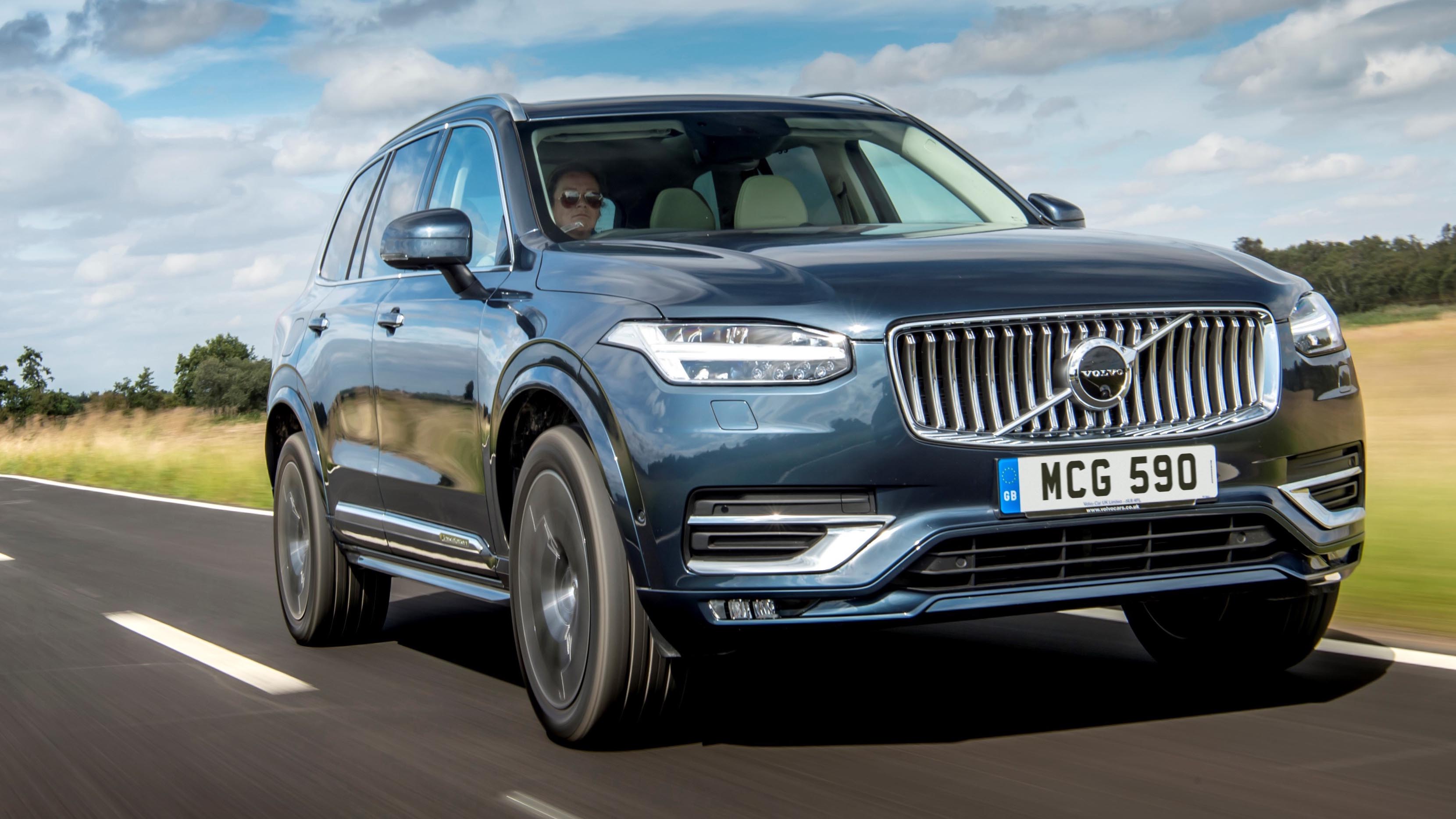
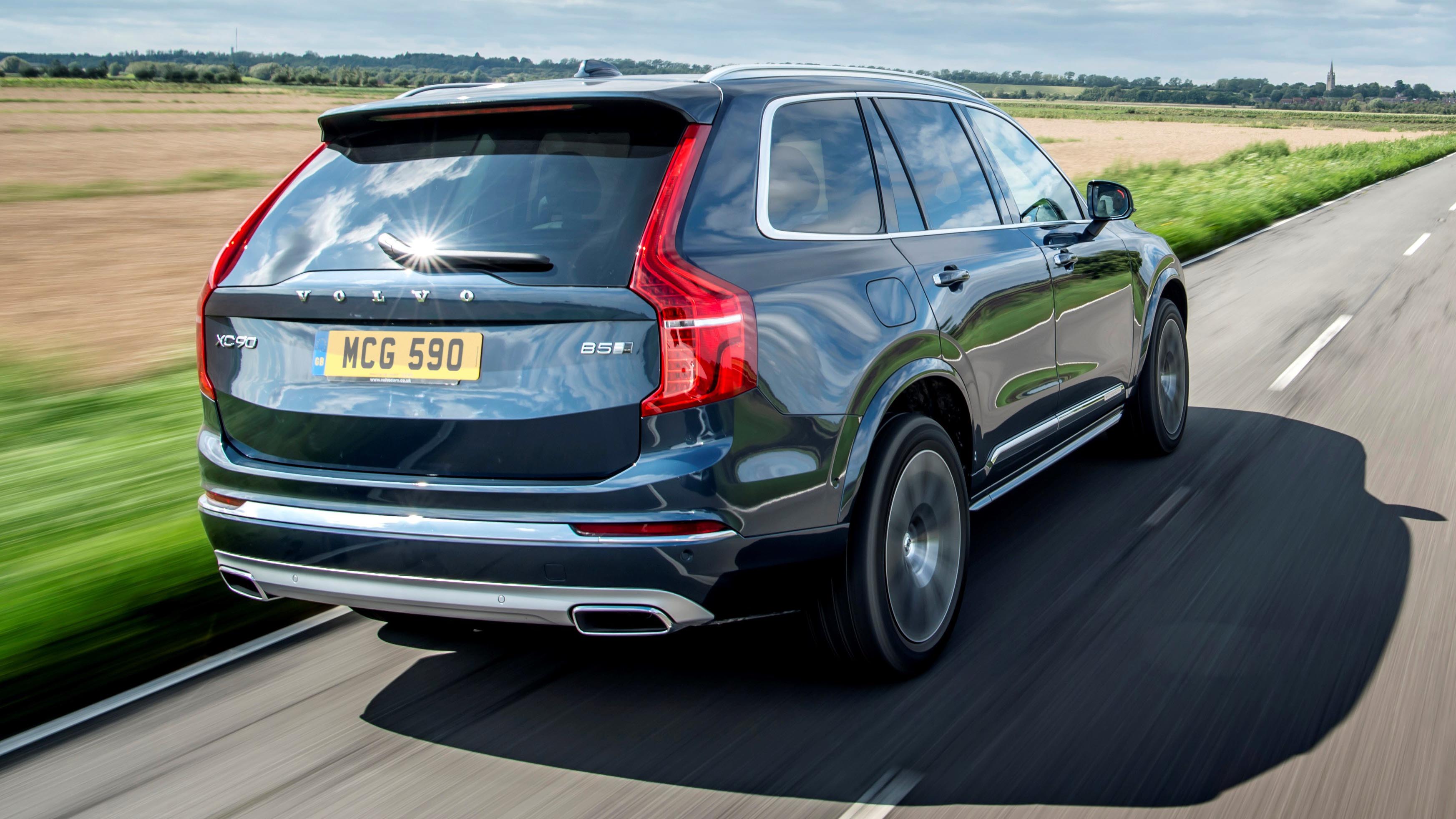
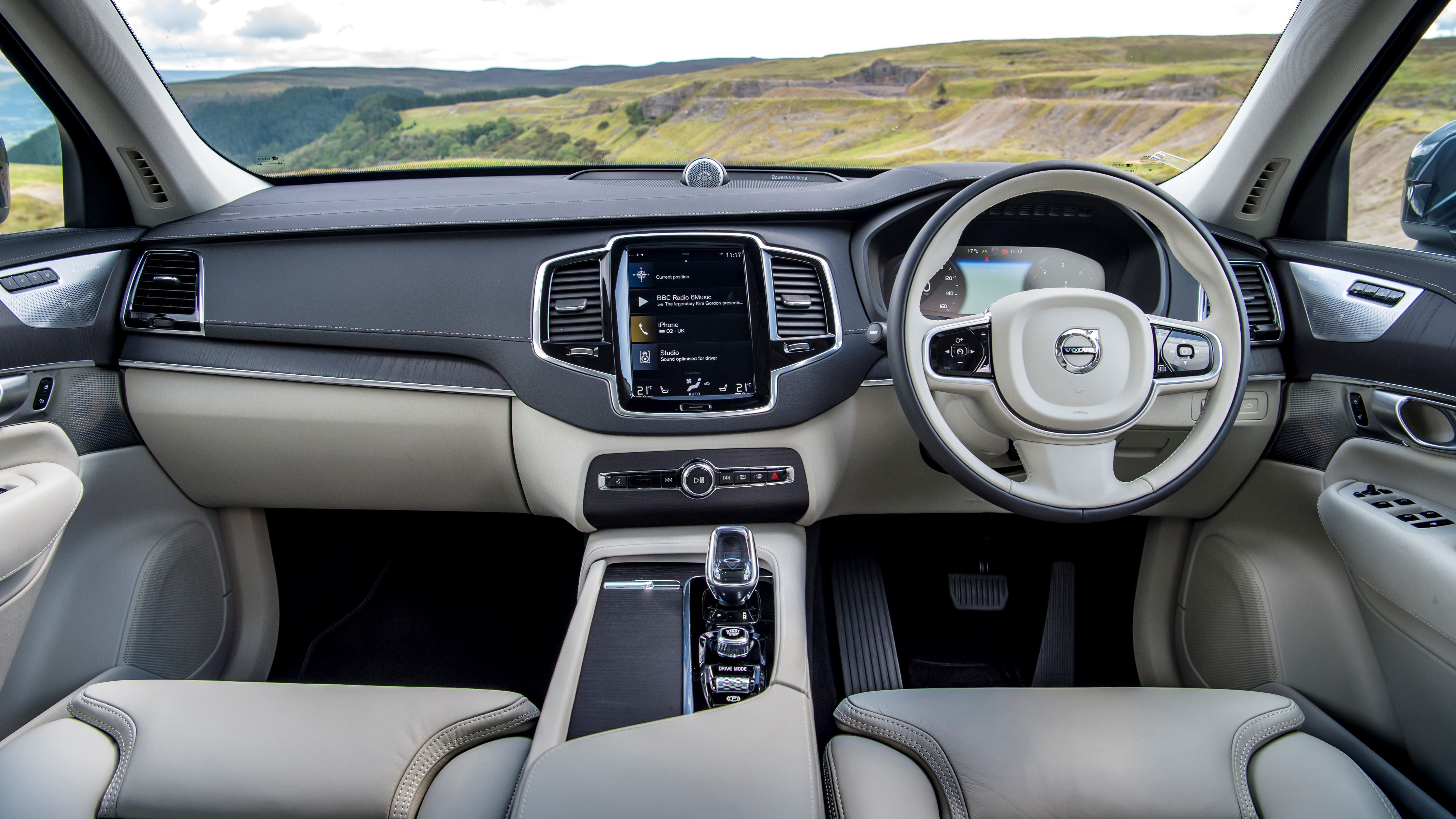
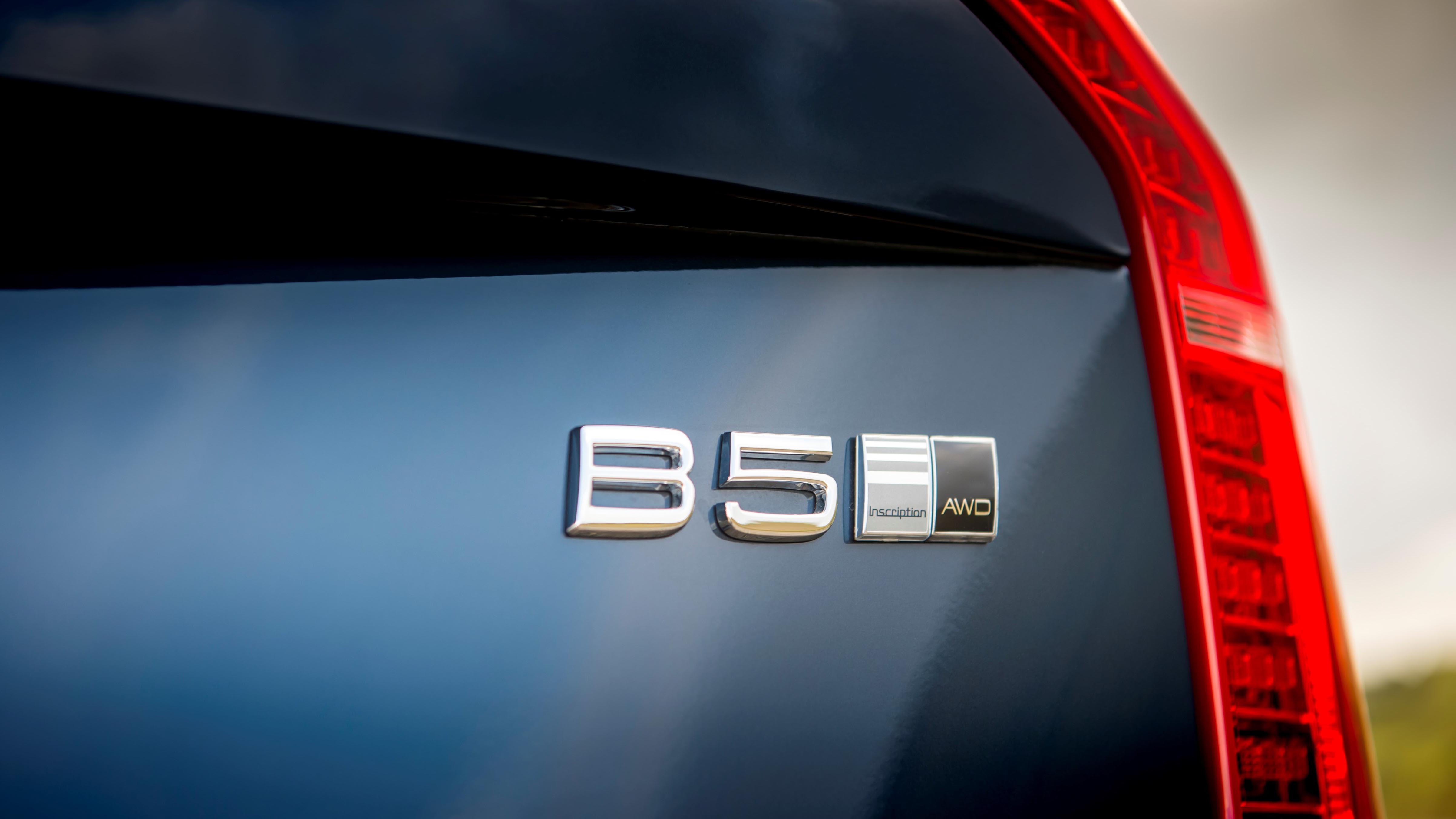
That’s still a handsome lump.
The Volvo XC90 is proving that the design renaissance kicked off by Volvo back in 2014 definitely has the ‘ages well’ gene. Ignoring the ancient and very-soon-to-die V40, the big XC90 bus is the oldest ‘new-age’ Volvo the company currently makes, so it’s up for mid-life tweaks.
Not that they’ve mucked about with the looks.
And why would they? The XC90 still looks solid and a little less brash, not quite as thrusting as a Range Rover Sport, BMW X5, Audi Q7 and so on. A concave-slatted grille is your biggest clue this is the updated version.
They’ve been busier under the bonnet then?
Busy keeping promises. It’s been five years since Volvo vowed not to build another engine bigger than a four-cylinder. Since, Volvo said it would wind down development of diesels, and electrify all its models by 2019. Now, since all of its new-age offerings have a plug-in version, the easiest thing to do to reach that goal would’ve been to bin off the V40 pronto. But Volvo’s doubling down – so the regular XC90s are going hybrid too.
Explain…
So, in addition to the flagship T8 Twin Engine model which delivers a 394bhp total from its petrol engine and electric motor (and can complete the school run on batteries alone), the rest of the range is dipping a toe into hybrid drive. This is the most intriguing one: the B5. It replaces the old D5 powertrain, and the first thing you need to know is that the ‘5’ is irrelevant. No five-cylinder histrionics here.
Let’s have the numbers.
What we have here is a 2.0-litre turbocharged diesel engine, with a 48-volt system to juice the starter motor, which also acts as a generator. You know the drill here: quicker-acting stop-start in traffic, electro-boost to reduce turbo lag, and engine narcolepsy when you’re coasting. Volvo says the savings in fuel appetite could add up to as much as 15 per cent, and quotes an average of 37-44mpg, depending on how big your rims are.
Top Gear
Newsletter
Thank you for subscribing to our newsletter. Look out for your regular round-up of news, reviews and offers in your inbox.
Get all the latest news, reviews and exclusives, direct to your inbox.
What about my carbon footprint?
Well maybe don’t fly anywhere on holiday this year. Oh, the car. Well. Officially this is a 154g/km of CO2 machine, which seems preposterously low for such a big bluff box. Pity the UK tax man doesn’t agree. By the margin of a measly three grams, the XC90 B5 trips into a £530 first annual tax payment bracket. And because it costs over £40k – our Inscription trim test car is a £57,000 machine – that’s another £320 per year to The Man, ta.
The XC90 Set can afford that. What’s their new car like?
Unremarkable, which swings both ways as a compliment and a negative. The integration of a hybrid system here is second-to-none. There’s no stutter in power delivery, no distant whining of electrical gubbins, just a smooth step-off and an amusingly rapid turn of speed.
Claims of 0-62mph in a Toyota GT86-catching 7.6sec sound perfectly reasonable to us. The 354lb ft torque peak only lasts from 1,750rpm to 2,250rpm, but that’s the four-banger diesel’s comfort zone before it starts to sound strained anyway, so aim to plant the throttle in that wodge of torque and let the eight-speed auto do the heavy lifting. It’s up to the task, but panics when asked to kick down.
Nothing about the XC90 says “I’m sporty” though – it doesn’t even have paddleshifters – so you soon let dalliances like ‘spotting enticing gaps at roundabouts’ become trivial matters for less emotionally developed motorists. In the creamy leather, soft wood cocoon of the XC90, you waft along, take in the view and wonder why anyone would buy a Rolls-Royce Cullinan. Before the diesel occasionally punctures the ambience, anyway.
What’ll she do, mister?
I spent a weekend in the XC90 and subjected it to a choked London commute, 150 miles of blissful motorway cruising and a good dollop of A-road nonsense here and there. Credit where it’s due, it enriched these laborious journeys, soothing my brow when the gridlock closed in and wafting rather charmingly after it escaped the clutches of the capital. This is easily my favourite of the big SUVs. Not the best to drive quickly – that’s the Porsche Cayenne – and neither is it the simplest to operate, with all the controls living in a touchscreen.
But so endearing is the XC90 that the fact it settled at 32-34mpg didn’t really perturb me. Yes, that’s with a fair chunk of 70mph-ish cruise-control action. And yes, it did most of its mileage only one-up, not carrying a full complement of seven in its exquisitely finished and robust passenger cabin.
I’d have liked to see economy settle in the higher 30s, but in fairness, hybrid assistance is less of a motorway help than it is in town, and when we ran a diesel Land Rover Discovery last year, it’d have sold its wonky-numberplated soul to reach 30 to the gallon. And the XC90’s fuel tank will easily take it past 450 miles on one refill.
Good car then?
Yep, another very well-executed Volvo that teams sensible, just-what-you-need-and-nothing more oily bits with a rich wellbeing when you’re on board. Unless you’re plugging in and recharging daily, this XC90 B5 has to be a more logical bet than the T8 PHEV, and while it’s probably not worth binning a recently acquired XC90 D5 for, it’s enough to reassert its position as one of Top Gear’s very favourite tall family wagons.
1969cc 4cyl turbodiesel, 232bhp, 354lb ft
37.7mpg, 154g/km CO2
0-62mph in 7.6sec, 137mph
2021kg
Volvo XC90














Interior
What is it like on the inside?
Volvo did something unusual with the XC90. They declared it would never have a bigger engine than a 2.0-litre four cylinder, and that it would be mounted crossways in the engine bay. Now, this may sound like a strange way to start talking about the interior, but what Volvo’s decision means is that the engine bay can be small. And a small engine bay means more room in the cabin.
Go to the far end of the XC90 and you’ll see what we mean. In most seven-seaters the rear pair press up against the tailgate. Here, there’s a 302-litre boot in that gap. And those rearmost seats aren’t small. Volvo says adults up to 170cm tall will fit. We say you can squeeze a beefy six-footer in for short hops as shoulder room is good too. Start folding seats and boot space grows to 680 litres, then 1,856 litres. It’s a cavern. Small point: due to its battery pack, the hybrid has a slightly higher boot floor, reducing capacity by 40 litres. The three individual middle row chairs, when not folded flat, all slide and tilt individually, providing plentiful legroom.
But it’s not just the space on offer, it’s the operation of the seats, the ease with which they can be folded with a single hand, the quality of the movement, the thoughtfulness evident throughout.
Especially around the driving environment. We’ve already spoken about driver comfort. Visibility is similarly impressive, and Volvo was one of the first to adopt a portrait touchscreen. It’s not as large and glamorous as Tesla’s, but it works well and supports Android and Apple phone connectivity.
In fact kit levels even in the base model are good – all cars come with LED lights, power tailgate, rear camera, sat nav and keyless (you start the XC90 by twisting a knob on the centre console). By all means head up the foodchain a bit, but we’d steer you down the Inscription route with its luxury touches, rather than the sportier R-Design. It just suits the XC90 better.
Because the cabin of the XC90 is a lovely place to spend time. Be brave, don’t make it overly black inside, tempting though that might be if you have children, instead bask in the pale woods and light fabrics that Volvo does so well.
Road Test: Volvo XC90 2.0 D5 Inscription 5dr AWD Geartronic
SPEC HIGHLIGHTS
Every few hours, one of the world’s carmakers launches yet another big expensive SUV. And yet, even among this forest of rivals, Volvo’s new XC90 manages to carve out its own distinctive clearing. It doesn’t throw weight and cost at what would be for most buyers a superfluity of off-road ability. Or sacrifice comfort for equally irrelevant Nürburgring horseplay. Or lose space in pursuit of a silhouette aping that incongruous fashion, the sports utility coupe. OK, so you might think a bald list of the XC90’s main advantages doesn’t make terribly exciting reading: roominess, versatility, comfort, safety. Yet it follows those aims with such single-mindedness, humanity and warmth that I ended up finding it beguiling and desirable. There’s a nobility in the doing of simple crafts well and generously.
All of which could have been said about the old XC90 of course, even if it was grim to drive. By stealth – modesty is a Volvo trait – it became a phenomenon. It lasted 12 years in production, far longer than a normal mortal span. Yet, even to the end, it had a near-fanatical following among owners, for all the same reasons reprised and amplified by the new one. Few rivals managed to catch up on safety, and it recently breezed an American crash test that wasn’t even invented when it was new. That’s the value of Volvo’s long-standing studies of real-life accidents, and building cars to protect against them rather than building cars to pass crash tests. Despite its selling big numbers in Sweden all those years, it wasn’t until two years ago that anyone, anyone, was killed in an XC90 there. The accident in question happened when the car came off the road and slammed into a tree.
Volvo’s engineering chief Peter Mertens reckons the new XC90 would probably have averted even that catastrophe. It has a world-first system that, if you depart the road, spools the belts tight, tenses the seat around you, moves the brake pedal out of the way and prepares the airbags, protecting you against the bouncing and the final impact. The body’s safety cage is boron-steel and even more comprehensive than before. Plus, as standard, Volvo’s vehicle, pedestrian and cyclist detection system means that if any of those three veers into your path, it’ll brake if you don’t.
Actually I recently ran a long-term-test V60 that had this system. Not that you’d have known. It wasn’t mentioned in the spec sheet or brochure, and I wasn’t going to take aim at a cyclist to find out if it was fitted. Volvo has never relented in its pace of safety innovation, but for a while it’s been neglecting to tell people. Realising its safety image has faded, it’s shifting its messaging to remind us. Example: the XC90’s seatbelt buckles are stamped “since 1959”, because Volvo put the world’s first restraints in a car all those years ago. Even the base model contains all the sensors needed for active cruise control and near-autonomous steering, plus various side-alert systems, so it can be upgraded later.
To be clear: although the new XC90 is very much channelling the spirit of the old one, nothing material gets a second life. In fact, it’s about as new as a car can be. All-new platform, a suite of engines and transmissions developed especially with that platform in mind, and entirely new info-entertainment-connection hardware and software. All that’s left of the old car is the name – but actually they couldn’t resist redesigning even the Volvo badge.
Volvo had got into a mess when owned by Ford. A bewilderingly complicated mishmash of engines from several former partners sapped its resources and denied it freedom. When Volvo was put up for sale in late 2008, its people could have looked for new cooperations. But instead of risking repeating the farce, they decided to paddle their own canoe, and their new Chinese owners gave Volvo the freedom to invest in scratch-building a versatile platform and chassis. That provides for the XC90, plus next year’s big V90 estate and S90 saloon (they replace the V70 and S80), and within a couple more years the new V60, S60 and XC60. From that followed a more controversial step. They wanted to major on fuel efficiency, slash the costs of designing different installations and crash structures, and also allow for short front overhangs to please the designers. So they decided that the platform would never have to carry more than a four-cylinder engine.
The 2.0-litre aluminium four-cylinder is made as both a range of diesels, in single and twin-turbo configurations up to 225bhp, and petrols culminating in a supercharged and turbocharged unit of 320bhp. If that’s not enough, there’s a version called T8 Twin Engine. That ditches the propshaft to the rear, and fills its tunnel with a plug-in battery. At the back is an electric motor. Charge it up for up to 25 pure-electric miles, or switch to all-guns power mode for 400bhp and 4WD. A BMW i8 in reverse, if you will, for £59,955. Company-car heaven, it’s rated at 113mpg and 59g/km CO2.
The outside of the XC90 is refreshingly honest. The silhouette is boxy and glassy, because it encloses a lot of space and lends light to the people inside. I really can’t imagine this car with gangsta tints: it’s far more social than that. But it’s not too homely. The front face has a confident grille and rich LED headlights with signature T-shaped running lights. They call them ‘Thor’s Hammer’ but, to me, that sounds like the name of some ear-assaulting Nordic death-metal band, entirely contrary to the warm and civilised Scandinavian spirit that permeates the rest of this design. Especially the interior.
Oh, yes, the interior. It’s just brilliant. Clean of lines but soft of edges, rich but not flash in its materials, and for the most part terrifically usable. Two things define it: the seven-seat packaging, and the new big-screen interface. Seats first. They’re all as anatomically correct as, well, as a Volvo seat. And they all have space. Even the third row is OK for me as a just-shy-of-average adult male, so it’ll be fine for kids or grandmas (though the latter might have trouble making a dignified exit). The second row recline and slide. And, even with the third row in use, the boot is as big as a medium hatchback’s. If you need more, all the seats and head restraints fold with an easy tug of a lever.
Sensibly, the vast centre screen is portrait format, because that’s best for scrolling through lists, or indeed looking at a heading-up map (though, to get any sense of where you’re going, you should align the map north-up, shouldn’t you?). It’s a high-definition job, its menus reasonably logical and its response latency quick enough to be generally unnoticeable. Intuitive touches, swipes and pinches let you do it all. It’s also open to downloading new apps, and works with Apple Carplay and Android Auto. The screen is actually reacting not to physical touch but to your breaking an infra-red curtain projected just clear of its surface. So it still works if you have long nails or are wearing gloves. Drawbacks are few but not negligible. If the car hits a bump, your finger sometimes jabs at the wrong menu line. And the screen quickly gets smeary.
Top Gear
Newsletter
Thank you for subscribing to our newsletter. Look out for your regular round-up of news, reviews and offers in your inbox.
Get all the latest news, reviews and exclusives, direct to your inbox.
To stress-test a car, it’s often best to have a go with a powerful engine, even if that’s not the one people buy. So here we are in the 320bhp petrol T6, a one-in-10 spec in Britain. It’s also got adaptive air suspension, also an option.
Most of the news is good. There’s decent urgency from the engine, and the charger-plus-puffer combination works well to eliminate lag. The auto transmission shifts smoothly between its eight speeds but doesn’t need that many for accelerating, though the long-legged eighth is obviously good for cruising economy. All good so far; the snag is the sound. It doesn’t only have the voice of a four, but of a fairly drab, metallic four at that. The engineers plan on doing more “sound design” in the weeks before launch, but say they won’t be aiming to synthesise six-pot harmonics. I just want a dose of interesting exhaust noise to mask the mechanical thrash.
The diesel D5 gets along well, fielding a big well of torque yet able to rev to almost 5,000rpm. It suits the car, and everyone in SUV-land has got used to diesels now, but the official tests say it won’t be much cheaper to fuel than the faster T6.
Sophistication in the suspension design is borne out on the road. It might be a tall vehicle, but body roll is well controlled and the chassis works with the standard four-wheel-drive to quell understeer and keep everything entirely benign. That’s not to say it’s actually much fun. It goes where it’s pointed like the faithful family wagon it is. The steering is high-geared – to the point of over-eagerness just off-centre – which helps disguise the fact you’re piloting a five-metre bus.
Omni-configurability is seemingly mandatory these days, and, sure enough, you can even select the level of brake assistance… a new one on me. But for pity’s sake, keep the chassis set to Comfort not Sport. That way, you get adequate damping and a decently pliable ride (at least on the 20-inch rims; the 21s add unwelcome grittiness). It’s a quiet and stable cruiser.
All the better to hear the bickering and mewling of the little darlings in the back. Ah well. If any car is soothing and protective enough to restore your fractured mental state, this might just be it.

